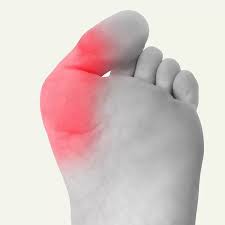Bunions are bony bumps that form at the base of the big toe, near the joint where the toe meets the foot. They develop when the big toe gradually shifts inward, pushing against the neighboring toes and forcing the joint outward. This shift can lead to inflammation, stiffness, and pain in the joint over time. Several factors contribute to bunion formation, including inherited foot structure, improper footwear, and medical conditions like arthritis. Though bunions often progress slowly, they can interfere with walking, balance, and footwear choices as they become more severe.
How Are Nonsurgical Treatments Used?
Nonsurgical options aim to reduce discomfort and slow the progression of bunions rather than eliminate them. These treatments are typically recommended during the early stages or for those who prefer not to undergo surgery. Common nonsurgical approaches include padding, shoe modifications, splints, and orthotic inserts.
When Do Surgical Treatments Become Appropriate?
Surgery is generally considered when nonsurgical measures no longer provide relief or when the bunion significantly interferes with daily life. Candidates for surgery often report ongoing pain, limited mobility, or visible deformity that affects shoe fit and activity levels.
Multiple surgical techniques exist, ranging from simple bone shaving to joint realignment and fixation. The choice of procedure depends on the bunion’s severity, joint flexibility, and the patient’s overall health. Recovery times vary, but most surgeries require a period of limited weight-bearing followed by gradual return to full activity.
What Are The Risks Of Surgery?
As with any procedure, bunion surgery carries risks. Common complications include swelling, stiffness, infection, or delayed bone healing. In some cases, additional surgery may be needed if symptoms return or if the correction is incomplete.
Choosing a qualified provider and discussing realistic outcomes can help reduce the likelihood of complications. Preoperative planning and postoperative care both play a key role in long-term success. Some patients may need physical therapy after surgery to regain strength and motion.
Nonsurgical treatments may help maintain comfort for many years, particularly in mild to moderate cases. However, they do not correct the underlying joint structure. In contrast, surgical correction aims to realign the bone and restore joint position, which may lead to more lasting changes in appearance and function.
What Should You Ask Your Provider?
Before choosing a treatment plan, ask your provider to explain the pros and cons of each option. Questions might include how your bunion is expected to progress, what to expect from recovery, and how different treatments affect function. Understanding these details can guide better decision-making.
Also consider discussing your daily routines, footwear preferences, and physical demands. These factors can influence which approach makes the most sense. A thorough consultation can help clarify the best steps for both short-term relief and long-term care.
Explore Your Option for Bunions
If bunions are interfering with your comfort or activity level, consider scheduling a consultation with a foot specialist. Whether you are looking to manage symptoms or correct the joint structure, there are multiple paths to explore. Understanding both nonsurgical and surgical options can help you choose a plan that aligns with your lifestyle and goals.









Leave a Reply